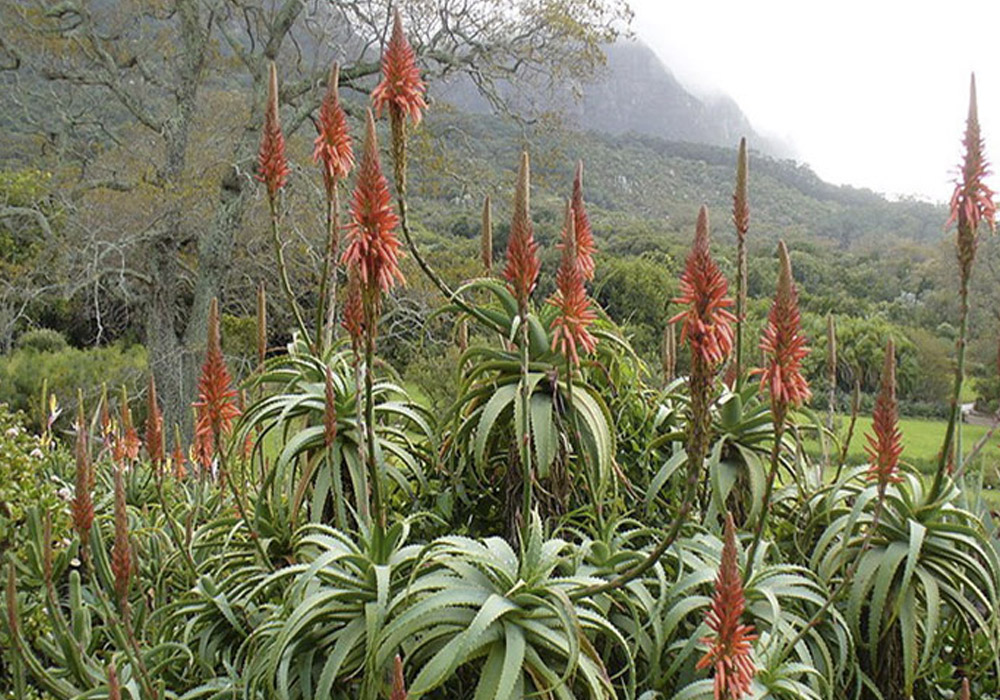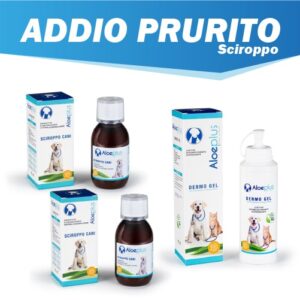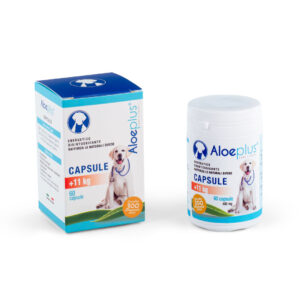Aloe Arborescens, a prodigy of nature
Properties and benefits of the Aloe plant have been known since ancient times.
For over five millennia, Aloe has been considered a kind of “natural healer”*.
It played a major role in the pharmacology of many ancient civilizations, including Egyptians, Assyrians, Indians, Mayans and Romans.
In 1862 George Ebers discovered on an Egyptian papyrus dating back to 1500 BC, one of the most detailed accounts of what Aloe was already known since ancient times.
A number of formulas for use (mixed with other natural products) were documented as well as a list of the countless properties of this plant for the treatment of various ailments.
For Cleopatra, the use of Aloe associated with milk baths, was prodigious for its beauty.
Plants of the genus Aloe
Aloe is a perennial, succulent plant belonging to the Aloaceae family.
Widespread practically all over the world, it prefers hot and dry climates.
In Italy the plant is widespread along the coasts and in any case always in areas where the temperature does not fall below zero.
There are a few hundred species, but the best known and studied are Aloe Vera (Aloe Barbadensis) and Aloe Arborescens.
Aloe Arborescens has smaller leaves than Aloe Vera, a lower amount of internal gel, but a higher concentration of active ingredients.
This makes it superior in terms of therapeutic properties compared to Aloe Vera, but less used because the lower yield in terms of production, makes its cost much higher.
Main components [2]*
The Aloe Arborescens, contains in its entirety, pulp and cuticle, the following elements:
Carbohydrates
The most important polysaccharide not only from a quantitative point of view, but above all from that of phytotherapeutic activity is acemannan, as it stimulates the functions of the immune system.
Vitamins and minerals
Vitamin A, E, C, B1, B2, B3, B6, B12, Folic acid, Calcium, Magnesium, Sodium, Potassium, Chromium, Iron, Manganese, Zinc.
Amino acids and enzymes
It contains 20 essential amino acids for humans. In particular Tryptophan, Phenylalanine, Serine and Histidine. The presence of these four amino acids in quantities considerably higher than that observed in Aloe Vera, would explain why ALOE ARBORESCENS exerts a greater analgesic activity.
Anthraquinones
Phenolic compounds that generate a laxative and antimicrobial action favoring the absorption of substances in the intestinal tract. Noteworthy is the Aloin that exerts an antitumor action.
Acetylsalicylic acid
Better known as Aspirin is known for its protective property of the heart muscle and vascular system.
CHRISTOPHER COLUMBUS:
Four vegetables are indispensable for human life: wheat, vine, olive and aloe. The first nourishes him, the second gladdens his heart, the third harmonizes him, the fourth heals him.
Properties and benefits of the Aloe plant
Recognized antioxidant properties [1]*
Vitamins B2, C and E minerals (manganese and copper), the anthraquinone and phenolic molecules present in Aloe Arborescens, perform powerful antioxidant actions capable of neutralizing the numerous free radicals that are the cause of degenerative diseases and mutations in general and lead to the onset of aging processes and precancerous situations.
Manganese and copper have antioxidant and anti-cellular aging actions for the whole body and in particular for the skin.
Similar effect, but with different mechanisms is given by vitamin B2.
Vitamin C is a typical antioxidant of the intracellular environment (especially white blood cells)
Vitamin E performs the same function as vitamin C, but at the level of the lipids of the cell membrane.
Peculiar anti-aging properties [2]*
Aloe Arborescens has a real rejuvenating effect on the appearance of the individual. A first reason for this power has been identified in the ability of the plant to increase the production of fibroplasts 6/8 times.
Fibroplasts are cells located in the dermis responsible for the production of collagen, a supporting protein that makes the skin elastic and firm.
In the aging process, fibroplasts slow down their production, both qualitatively and quantitatively, of collagen and consequently the skin loses elasticity, becomes dry and scaly and wrinkles are highlighted.
Aloe helps you by increasing the activity of fibroplasts, consequently it also increases collagen.
The end result?
The aging process of the skin slows down and at the same time it will be more hydrated more elastic and firmer, reorganizing the normal structure of the skin itself and reducing wrinkles.
Evident antibacterial, antifungal and antiviral properties [3]*
Each of these properties is carried out by specific molecules present in Aloe Arborescens.
Cinnamic acid and Chrysophanic acid counteract the development of bacteria and fungi. In particular, Chrysophanic acid has an action on fungi that can settle in the intestine; in addition to being fungicidal it also has a laxative and purifying effect, this allows an effective removal of toxic waste produced by the intestine.
Aloetic Acid and Aloins, together with acemannan have antibiotic properties. The coordiant and synergistic action of these specific molecules, particularly abundant in Aloe Arborescens, enhances the final effect helping to strengthen the immune system.
Specific Anti-Inflammatory and Pain-Relieving Properties [4]*
These 2 properties are the best known and appreciated phytotherapeutic characteristics of Aloe Arborescens. The action it performs, calming and soothing on tissues, recalls that of synthetic steroid drugs, but without producing the typical side effects of these drugs.
The anti-inflammatory components of Aloe Arborescens are identified in 3 plant steroid molecules:
1) Campesterolo
2) B-sitosterol
3) Luteol
In addition to these molecules, acemannan and bradykinase also contribute to the anti-inflammatory effect. This intense anti-inflammatory activity also has a soothing and pain-relieving effect.
Characteristic healing and stimulating properties of epithelial growth (cell regeneration) [5]*
Since the time of Alexander the Great, Aloe was used in the treatment of wounds and burns of various kinds. The healing property of wounds appears complementary and related to the anti-inflammatory capacity of the plant.
Aloe participates in the wound healing process through 2 components:
1) The high molecular weight component of acemannans
2) The low molecular weight component of anthraquinones
In particular, a recent experimentation of the Federico II University of Naples, carried out with the extract of Aloe Arborescens obtained with our exclusive method of processing the entire leaf, promotes cell regeneration.
Surprising immunomodulatory and immunostimulating properties [6]*
Acemannan is a powerful stimulant of the immune system. It works by stimulating and promoting the release of substances that enhance the immune system. Thanks to the action of polysaccharides there is also a strengthening of the skin’s immune system with consequent protection of the damage caused by ultraviolet rays.
The extraordinary actions of acemannan and polysaccharides lead to the strengthening and modulation of the immune system.
Gastrointestinal tonic and gastroprotective activity [7]*
Aloe Arborescens normalizes the structure and function of the gastrointestinal wall. It improves the intestinal bacterial flora, reduces abdominal spasms, promotes the improvement of gastritis, ulcers (peptic and duodenal) and irritable bowel. These properties are attributable to its ability to coat and protect the walls of the stomach.
Unique hypoglycemic properties[8]*
Numerous trials have shown a safe hypoglycemic effect of Aloe, both in subjects with diabetes mellitus and in patients with insulin-independent diabetes. This effect is due to the presence of Erborano Ae B, they are two fractions of acemannan and prove to be particularly effective in determining a drastic lowering of fasting blood sugar. In addition to lowering blood sugar, the administration of Aloe Arborescens to the diabetic patient is able to resolve skin ulcers often associated with diabetic syndrome.
Anticancer [9]*
Numerous researches have demonstrated the properties and benefits of the Aloe plant, as well as the therapeutic potential on the inhibition of the growth of cancerous cells. In particular, a recent experiment by the Federico II University of Naples, carried out with the extract of Aloe arborescens obtained with our exclusive method of processing the entire leaf, has shown a clear anti-proliferative effect of skin cancer cells.
Also well known are the story and the preparation of Aloe Arborescens by Father Romano Zago beautifully narrated in the books:
“Cancer can be cured” that you can find here:
“Aloe is not a medicine and yet it heals” that you can find here:
Prof. Paolo Lissoni, Oncologist of the San Gerardo Hospital in Monza, has carried out a trial on 240 patients suffering from neoplasia, treated with and without Aloe Arborescens,
=> click here to read the results of the trial< =
The active ingredients contained in Aloe Arborescense perform, if used correctly, a healthy action on the whole body.
Let’s start by analyzing the beneficial effects on the digestive [10]system *.
Stomach:
The presence of mucopolysaccharides, very rich in Aloe Arborescens allows to develop:
– A valid protection of the mucous membrane of the stomach from the high acidity of gastric juice.
– It also inhibits the development of helicobacter pilori.
– An action with a soothing effect of gastritis and esophagitis.
Intestine:
The properties of Aloe Arborescens for the intestine are a godsend, in fact they are an excellent remedy against:
– Intestinal laziness and constipation, increasing intestinal peristalsis and carrying out a purifying, liberating effect thanks to the presence of anthraquinones.
– Diarrhea: contrary to what you might think for the presence of Aloin that has purifying effects, aloe can solve this alteration by virtue of its antibacterial and antiseptic active ingredients, restoring the function of the stomach.
How is it possible that Aloe juice is great against constipation and also against diarrhea? Because it contains active ingredients useful for combating both ailments, this is one of the most fascinating features of herbal medicine.
Beneficial effects of Aloe on the cardiovascular [11]system *:
The intake of Aloe (the advice is to always take extracts made with Aloe Arborescens, as it has a higher concentration of active ingredients than the more common Aloe Vera. To find out why Aloe vera is good, but Aloe Arborescens is better, all you have to do is
click here
) allows you to get enormous benefits on the cardiovascular system.
The particular composition of Aloe Arborescens, which has high amounts of dietary fiber, vitamins, antioxidant compounds, polyunsaturated fatty acids and trace elements, is useful for carrying out an effective prevention and improvement of the optimal ratio between HDL cholesterol and LDL cholesterol, counteracting dangerous fat deposits in the arteries.
The final effect is that of a purification with elimination of toxins, after all Father Romano Zago, the main popularizer in the world of
the recipe for the juice of the preparation of Aloe Arborescens,
states that:
“This remedy acts like a broom to clean the blood thoroughly”
It’s the ideal way to restart your body and start improving overall health.
Benefits on the immune[12] system*:
The recognized and scientifically proven immunostimulating and immunomodulating property of Aloe, due to the presence of active ingredients that contribute to strengthening the immune system, one above all is acemannan.
– It is the progenitor of carbohydrates, performs important actions on the gastrointestinal system and strengthens the immune system. It produces an immune reaction that stimulates cells against external attacks of various factors such as viruses, bacteria and seasonal allergies.
A complete and detailed list of all the active ingredients present in Aloe juice that help strengthen the immune system can be found
here.
By taking Aloe, your immune system will immediately be stronger and therefore able to defend you from external threats.
The benefits of Aloe on the respiratory[13] system*
Thanks to the germicidal action of some anthraquinones, associated with the soothing and healing action of mucopolysaccharides and plant sterols, Aloe proves to be a very effective remedy against allergic rhinitis.
If you suffer from allergic rhinitis, the advice is to take Aloe before the spring period (January-February) and you will see that during the pollen period your discomfort will be drastically reduced.
No.B. Do not use aloe when you already have rhinitis, in this case the remedy does not work. You must act preventively.
The antitumor action of Aloe Arborescens[14]*
It is also used to counteract physical weakening from chemotherapy treatment.
Several scientific studies and research by oncologists have been done that demonstrate the anticancer capabilities of Aloe.
To read and learn more about the topic click here.
We can conclude by stating that Aloe has an excellent detoxifying and purifying action, promotes the functions of the liver, kidneys and in general of the body. An organism in which there are no accumulated toxins due to psycho-physical stress, environmental pollution, incorrect nutrition, hectic pace of life, inappropriate diet, lack of sleep is certainly more able to defend itself and maintain a state of good general health, preserving at best both the organic defenses and the mechanisms of cellular and tissue repair.
Cosmetic properties of Aloe Arborescens
The extract applied topically is particularly effective because the active substances rather than remaining on the surface, penetrate the skin tissue thanks to the presence of lignin.
– Greater hydration of the skin by polysaccharides;
– An increased deposit of collagen and elastin, due to the stimulation of fibroblasts of the dermis. This gives the ability to reduce the tendency of aged skin to wrinkle;
– A reduced pigmentation of the skin and therefore a reduction of skin spots;
– A strengthening of the skin’s immune system.
MAHATMA GANDHI:
You ask me what is the secret of the forces that sustained me during my long fasts; well it was my heady faith in God, my simple and frugal life and aloe, of which I discovered the benefits as soon as I arrived in South Africa in the last years of the century.
To benefit from the more than 300 active ingredients present in Aloe we have specifically created Aloe Arborescens in capsules.
With a simple gesture and in an immediate way you can enjoy all the properties of Aloe in the most natural way ever.
To learn more and to know the enormous benefits obtained by those who use >>them CLICK HERE<<
To your well-being!
BIBLIOGRAPHY:
[1] Bruce W.G.G. 1975. Medicinal properties in the Aloe. Excelsa 57-58.
[2] Kodym, A., 1991. The main chemical components contained in fresh leaves and in a dry extract from three years old Aloe Arborescens Mill. grown in hothouses Pharmazie 46, 217-219
[3] Bruce W.G.G. 1967. Investigations of antibacterial activity in the Aloe. South Africa Journal 41, 984
[4] Yamamoto, M., Masui, T,. Sugiyama, K., Yokota., Nagakomi, K., Nazakawa, H., 1991. Antiinflammatory actives constituents of Aloe Arborescens Miller
[5] Biochemical and Cellular Approach to Explore the Antiproliferative and Prodifferentiative Activity of Aloe Arborescens Leaf Extract
(Blanda Di Luccia,1 Nicola Manzo,1 Maria Vivo,1 Eugenio Galano,2 Angela Amoresano,2 Elvira Crescenzi,4 Alessandra Pollice,1 Raffaella Tudisco,3 Federico Infascelli3 and Viola Calabrò1)
1Department of Structural and Functional Biology, University of Naples ‘Federico II’, Naples, Italy
2Department of Organic Chemistry and Biochemistry, University of Naples ‘Federico II’, Naples, Italy
3Department of Zootechnical Sciences and Food Inspection, University of Naples ‘Federico II’, Naples, Italy
4Institute of Endocrinology and Experimental Oncology, CNR, via S. Pansini, 580131, Naples, Italy
[6] Brossant, J.Y., Ledeaut, J., Ralamboranto, L., Rakotovao, L.H. Solar, S., Gueguen, A., Coulanges, P., 1981. Immunostimulating properties of an extract isolated from Aloe vahombe. Archives Insitut Pasteur Madagascar 48, 11-34
[7] Bland, J., 1985. Effect of orally consumed Aloe juice on gastrointestinal fnction in normal humans. preventive medicine 14, 152-154
[8] Dr. O.P. Agarwal – Prevention of Atheromatous Heart Disease, Angiology, The Journal of Vascular Diseases. Antidiabetic activity of Aloe: preliminary clinical and experimental observation. Horm. Res., Vol. 24, no 4, pp. 288-294
[9] I) A Randomized Study of Chemotherapy Versus Biochemotherapy with Chemotherapy plus Aloe Arborescens in Patients with Metastatic Cancer (PAOLO LISSONI1, FRANCO ROVELLI1, FERNANDO BRIVIO2, ROMANO ZAGO3, MASSIMO COLCIAGO4, GIUSEPPINA MESSINA1, ADELIO MORA1 and GIORGIO PORRO1).
1Division of Radiation Oncology, 2Division of Surgery, St. Gerardo Hospital, Monza, Milan; 3Aloe Foundation, Isernia; 4I. N.R.C.A Laboratory of Analysis, Lecco, Italy
II) Biochemical and Cellular Approach to Explore the Antiproliferative and Prodifferentiative Activity of Aloe Arborescens Leaf Extract
(Blanda Di Luccia,1 Nicola Manzo,1 Maria Vivo,1 Eugenio Galano,2 Angela Amoresano,2 Elvira Crescenzi,4 Alessandra Pollice,1* Raffaella Tudisco,3 Federico Infascelli3 and Viola Calabrò1)
1Department of Structural and Functional Biology, University of Naples ‘Federico II’, Naples, Italy
2Department of Organic Chemistry and Biochemistry, University of Naples ‘Federico II’, Naples, Italy
3Department of Zootechnical Sciences and Food Inspection, University of Naples ‘Federico II’, Naples, Italy
4Institute of Endocrinology and Experimental Oncology, CNR, via S. Pansini, 580131, Naples, Italy
III) CANCER THERAPY 23 clinical cases of malignant tumours CURED WITHOUT CHEMO-THERAPY – Nacci Giuseppe (2013)
[10] Bland, J., 1985. Effect of orally consumed Aloe juice on gastrointestinal function in normal humans. preventive medicine 14, 152-154
[11] Tizard, I., Carpenter R.H. Kemp, M., Beppu, H., Fujita, K., 1993. Antigastric ulcer effects of Aloe Arborescens Mill. Var. natalensis Berger. Phytotherapy Research7, S34-S36
[12] Marshall, G.D., Druck, J.P., 1993. In vitro stimulation of NK activity by acemannan.
[13] Shida, T., Yagi, A., Nishimura, H., Nishioka, I., 1985. Effect of Aloe extract on peripheral phagocytosis in adult bronchial asthma. Medical planta 51, 273-275
[14] I) A Randomized Study of Chemotherapy Versus Biochemotherapy with Chemotherapy plus Aloe Arborescens in Patients with Metastatic Cancer (PAOLO LISSONI1, FRANCO ROVELLI1, FERNANDO BRIVIO2, ROMANO ZAGO3, MASSIMO COLCIAGO4, GIUSEPPINA MESSINA1, ADELIO MORA1 and GIORGIO PORRO1).
1Division of Radiation Oncology, 2Division of Surgery, St. Gerardo Hospital, Monza, Milan; 3Aloe Foundation, Isernia; 4I. N.R.C.A Laboratory of Analysis, Lecco, Italy
II) Biochemical and Cellular Approach to Explore the Antiproliferative and Prodifferentiative Activity of Aloe Arborescens Leaf Extract
(Blanda Di Luccia,1 Nicola Manzo,1 Maria Vivo,1 Eugenio Galano,2 Angela Amoresano,2 Elvira Crescenzi,4 Alessandra Pollice,1* Raffaella Tudisco,3 Federico Infascelli3 and Viola Calabrò1)
1Department of Structural and Functional Biology, University of Naples ‘Federico II’, Naples, Italy
2Department of Organic Chemistry and Biochemistry, University of Naples ‘Federico II’, Naples, Italy
3Department of Zootechnical Sciences and Food Inspection, University of Naples ‘Federico II’, Naples, Italy
4Institute of Endocrinology and Experimental Oncology, CNR, via S. Pansini, 580131, Naples, Italy








Recent Comments